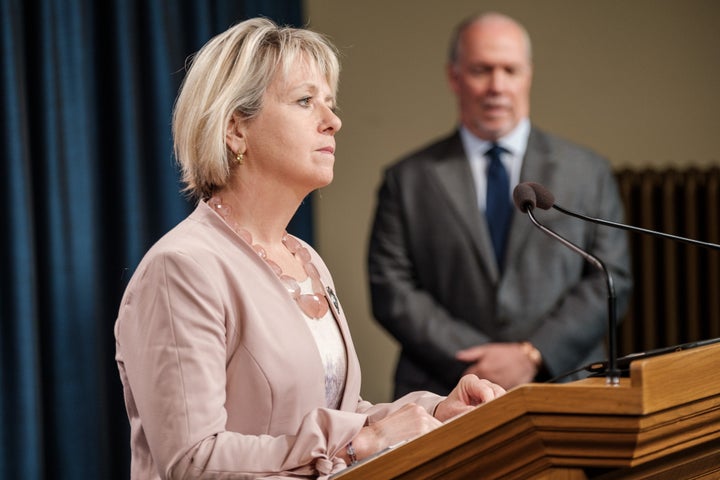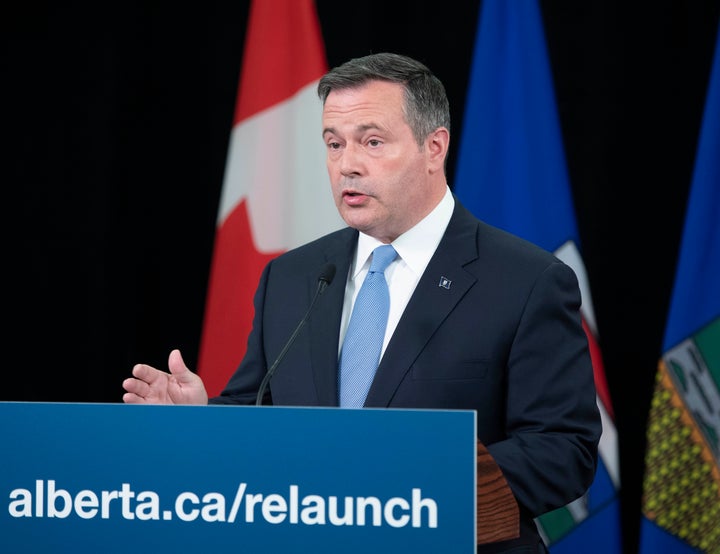They say the sequel never quite lives up to the original.
That’s certainly the hope for Canada’s health officials and provincial leaders when it comes to the prospect of a “second lockdown” in the wake of the COVID-19 pandemic.
Cases are starting to increase steadily across Canada. Provinces like B.C. and Alberta currently have the highest number of active cases in the pandemic, while numbers are creeping up once more in places like Ontario and Quebec.
Officials are looking at reintroducing some restrictions and public health orders to prevent the spread of the virus, particularly as temperatures fall, people move inside and the annual flu season looms.

“This is something that we have expected, we knew that as we took those all important steps of restarting our economy we were going to see more cases,” B.C. chief medical officer Dr. Bonnie Henry said Wednesday.
But there’s one big difference now compared to the March lockdown when cases first spiked — officials know a lot more about the virus and how it spreads than anyone did half a year ago.
And they are mobilizing that data to fight a possible second wave.
“We know more today than we did in March,” B.C. Premier John Horgan said Wednesday. “Seven months later, we know a great deal more than we did then and we are building every week on the steps we have taken.”
Data-driven decisions
B.C. is one of the only provinces to release data publicly on the origin of recent cases. Last week, Henry and Health Minister Adrian Dix presented modelling for the province, along with a breakdown of not only the age and other demographic information about recent cases, but where contact tracers trace them from.
The majority of cases in the province since June, particularly in younger populations, have come from community transmission in places like private parties, workplaces and restaurants.
“Seven months later, we know a great deal more than we did then and we are building every week on the steps we have taken.”
- B.C. Premier John Horgan
Henry pointed to orders specifically targeting those spaces where infections are numerous as a model for reintroducing restrictions.
It’s worked before.
In July, B.C. cracked down on vacation rentals and AirBnBs, limiting the number of people who can stay in one accommodation and putting restrictions on outside guests. This came following a spike in cases during the Canada Day long weekend in Kelowna, many originating from rental property parties.
On Tuesday, Henry issued a new order limiting late-night liquor service and totally closing nightclubs and banquet halls. She said the targeted order was intended to limit a major source of new cases that has been overburdening contact tracers.
WATCH: B.C. closes nightclubs, banquet halls. Story continues below.
“I know it’s challenging for the industry, but they are just not safe environments right now and it has taken up a huge amount of public resources to try and track people,” she said Wednesday.
Henry pointed to data showing the impact of total closures as evidence why a full second lockdown is a bad idea. Keeping schools open, for example, can dramatically reduce mental health impacts on students and allow parents to return to work.
“We want to do the least amount we can by order, and make sure we can support people to do the right things they need to do for their own individual situation,” Henry said Tuesday.
“I know it’s challenging for the industry, but they are just not safe environments right now and it has taken up a huge amount of public resources to try and track people.”
- B.C. chief public health officer Dr. Bonnie Henry
She also noted that lockdown measures negatively impacted homeless populations in the province by limiting the number of people who could access shelter services. Returning to that would have a negative impact, particularly going into the winter.
Henry has repeatedly said there is no “magic number” that would necessitate return to a full lockdown. The goal is to keep the reproductive number — how many new people each infected person passes the virus to — under one, which is key to limiting community transmission.
According to last week’s modelling, that will require some scaling back of social interactions.
“I do think these are necessary actions right now,” Henry said. “I think we need to all start rethinking what we need to do to get us through the next few months as a community together.”
Other data the province is looking to? How countries further along the curve have handled things. Henry said the rise in cases in young British Columbians was foreshadowed by similar situations around the world.
And the province has paid close attention to how influenza season has evolved in the southern hemisphere over recent months.
“The good news that we’ve seen out of the southern hemisphere is that their immunization rates were very high,” Henry said, noting that measures put in place in other countries to prevent the spread of COVID-19 did have an impact in limiting the spread of influenza.
According to the World Health Organization, influenza rates in the southern hemisphere have been far below average this year.
Other provinces getting ready too
B.C. isn’t the only province staring down a second wave of infections in the fall. This week, Ontario Health Minister Christine Elliot announced that her province would pause some reopening plans to account for a recent increase in cases.
“We want to keep the community transmission very low so that it won’t get into our schools, so our children will be safe,” she said.
This week, the province logged its highest number of new daily infections since July.
Premier Doug Ford said he isn’t ready to reimplement restrictions yet, but will if necessary.
“We aren’t there yet,” Ford said. “But if it just keeps creeping and creeping and people are ignoring the guidelines and the protocols — come on guys, we have gone through everything together as a team and you can’t let your guard down now.”
Quebec has developed a nine-point plan to deal with a possible second wave. During a mid-August news conference, Health Minister Christain Dubé said the province will take what its learned from the first wave into account.
“We aren’t there yet.”
- Ontario Premier Doug Ford
“We learned a lot from the first wave,” Dubé said. “We drew lessons from the things we did well, and not so well.”
This week, Dubé said the province will approach new lockdowns regionally, issuing coloured alerts for specific regions seeing increased spread, that could come with additional restrictions.
Quebec’s health authorities had previously said they hoped to keep that number below 20 cases per million. This week the province passed that threshold.
Not everyone’s on board
On Wednesday, Alberta Premier Jason Kenney was asked if he planned to introduce further restrictions in the province, in line with B.C.’s approach.
He said there was no plan to do that.
“Alberta’s belief is we’re not going to micromanage our way out of this,” Kenney said Wednesday. “We’re only going to get through this if people exercise personal responsibility, and that’s what we call on Albertans to do.”
Kenney said shutting down businesses of any kind has huge impacts.

“We have to be focused on the imperative of not just saving lives, but also saving livelihoods,” Kenney said. “The ultimate downstream consequences of constantly shutting down businesses and laying people off will be depression, potentially addiction, huge family challenges, pushing people into poverty. And that is unacceptable.”
When asked about introducing measures like B.C.’s, Alberta chief medical officer Dr. Deena Hinshaw clarified that the province hasn’t seen the same spike related in one setting, but will watch closely in the coming weeks.